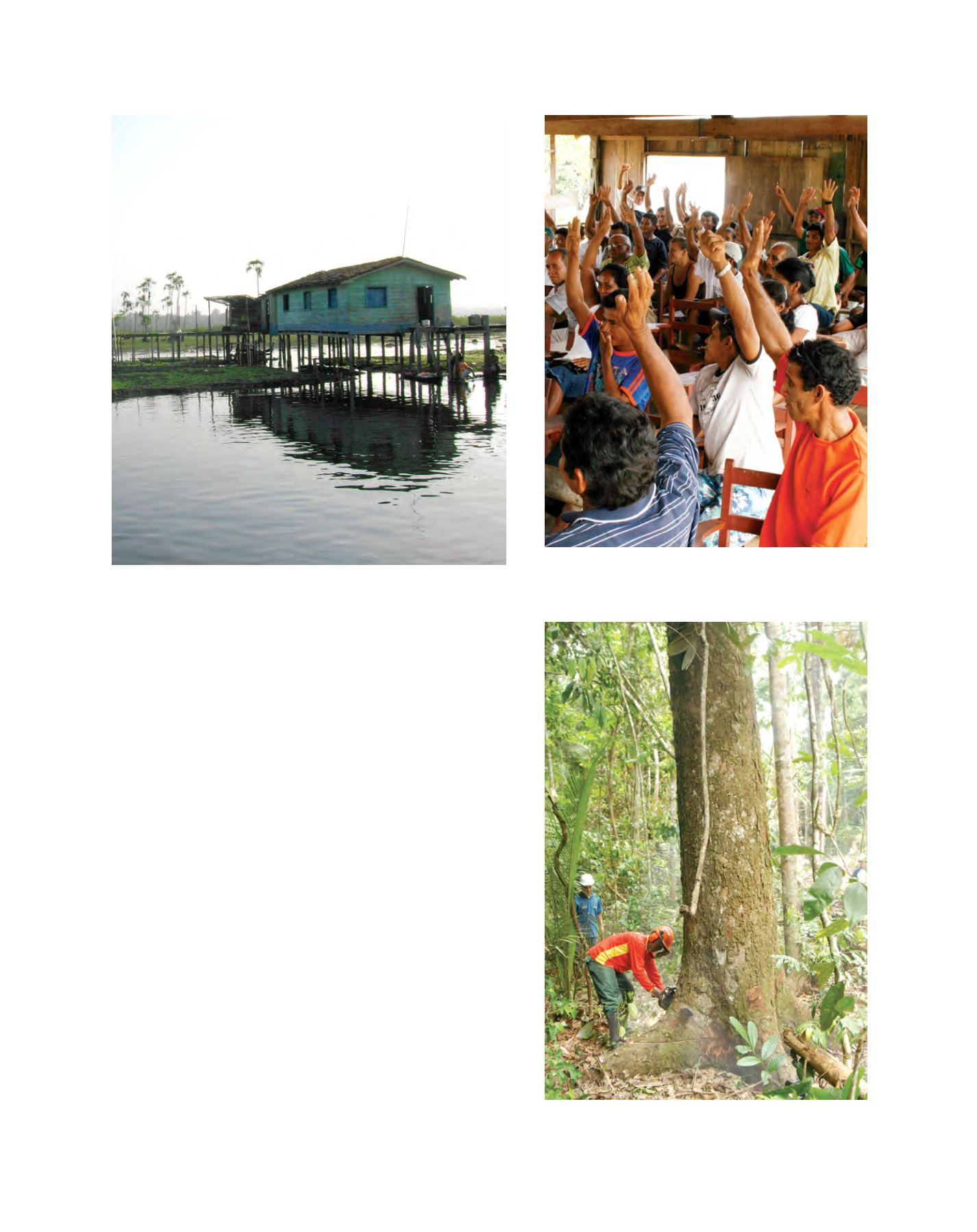

[
] 251
2011, is being carried out in 13 states and has expanded its influ-
ence to 20,000 families in both Amazon and Caatinga biomes.
Hence, considering the growing number of initiatives and the
potential extension of community-based forest management in
all different Brazilian biomes, the prospects for the coming years
look very promising.
Forest concessions
Forest concessions in Brazilian public forests have been regulated
since 2006. The competition is based on a bidding process with
broad social participation and its selection criteria are based on price
($/m
3
) and best technical proposal, including social, environmental,
and economic issues.
Currently there are five national forests going through forest
concession processes, adding up to 1 million hectares. Of which
145,066 hectares are already operating and benefiting five compa-
nies, generating approximately 1,590 job positions and investments
in local communities, which corresponds to more than US$300,000
per year. It is expected that approximately 2 million hectares of
forest concessions will be operational by 2013.
Forest management in natural forests
The sustainable use of natural forest resources through forest
management for timber production is promoted as a Government
policy in the Amazon forest. A comprehensive framework of regu-
lations and procedures is available for the Amazon region to drive
users to implement good practices. The silvicultural system is poly-
cyclic, based on selective logging of 4-6 trees per hectare harvested,
in a 35-year cutting cycle. These guidelines are applied in order to
retain enough seed trees to promote natural regeneration.
Typical beneficiary of the Green Grant Program
Community meeting at a Reserva Extrativista (Brazilian type of
protected area)
Sustainable Forest Management at the Floresta Nacional do Jamari,
the first National Forest under the forest concession regime
Image: sAndréa Oncala
Image: Eduardo Venticinque
Image: Jefferson Rudy/MMA
















